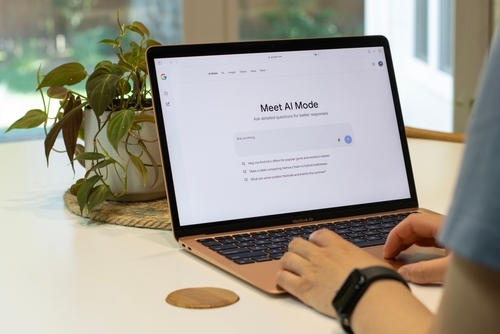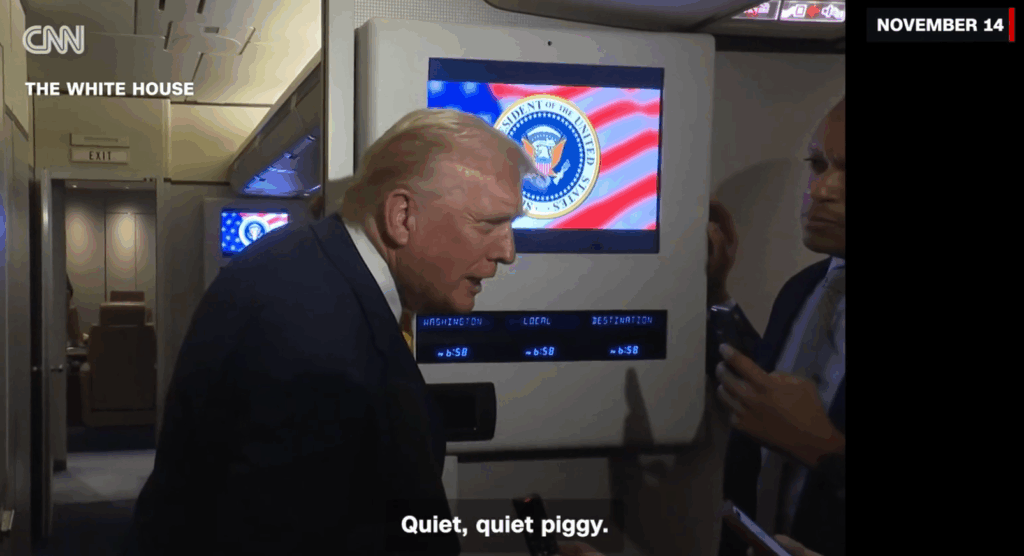Nearly 44% of a retailer’s web traffic that ends in conversion comes from paid or organic search. Google’s new AI Mode will change that.
Google is rolling out AI Mode, a chatbot-style interface within search, the behemoth announced at its annual developer conference, Google I/O in May.
Instead of shoppers typing in a few keywords for a normal Google search, they can ask complex, multi-part questions. For example, a user could ask for a recommendations for a product with specific attributes and with an age range, such as “Show me the five best pedometers for adults over 65 that are less than $20.” The tool will break out the question into multiple parts to dive deeper into the web to provide “hyper-relevant content that matches the question,” according to Google.
Google also unveiled a tool called AI Mode with Deep Search, which can handle even more complex queries, with parameters relating to time, location and cost, among other preferences, and create an expert-level, fully-cited report in just minutes, saving users hours of research, according to Google.
Retailers depend on traffic from Google
What this new way of searching for information means for retailers that depend on organic search results and search ads for web traffic remains to be seen. But merchants should be prepared for a dip in traffic from Google.
“The rise of zero-click searches on Google’s AI Mode will reduce organic search traffic to merchants’ sites,” said Nikhil Lai, principal analyst covering performance marketing at Forrester Research. “Consumers increasingly get what they need from conversations with Gemini and need not click through.”
Traffic to retail sites has already started to decrease roughly 15%-50% year over year since the emergence of AI-based search tools like ChatGPT, plus other factors, Lai said.
Roughly 16% of web traffic to U.S. retail sites that ends in a sale is from organic search, and 28% is from paid search, according to Adobe data from January-April 2024. Adobe’s data is based on analyzing online retail transactions online, covering over one trillion visits to U.S. retail sites, 100 million SKUs and 18 product categories. Direct web visits (20%) and affiliates (17%) are also a large source of web traffic that end in a conversion, according to Adobe.
Shoppers already like using generative AI to search
Consumer habits have already begun to shift to use generative AI for search and for shopping, according to February 2025 data from Adobe Analytics. Traffic to U.S. retail websites that originated from a generative AI source, such as Chat GPT, increased by 1,200% in February 2025 compared with seven months earlier in July 2024.
“While generative AI traffic remains modest compared to other channels, such as paid search or email, its growth has been notable — doubling every two months since September 2024,” Adobe’s Vivek Pandya wrote in a blog.
In Adobe’s survey of 5,000 U.S. consumers in February 2025, 39% of consumers said they use generative AI for online shopping. The most popular shopping tasks include:
- Research – 55%
- Seeking deals – 43%
- Receiving product recommendations – 47%
- Getting present ideas – 35%
- Finding unique products – 35%
- Creating shopping lists – 33%
As the survey suggests, shoppers that visit retail sites from a generative AI source are most likely to be browsers and not buyers. Based on Adobe’s client data, consumers coming from a generative AI source browse 12% more pages per visit, with a 23% lower bounce rate, although are 9% less likely to convert compared with other sources of traffic.
While consumers may by using AI tools to shop and still visit sites, traffic to retail sites will continue to decrease as shoppers receive more information within Google’s ecosystem, Forrester’s Lai said.
Retailers need to change with this update and ensure Google still sees their content.
“For content SEO, you should analyze search results to identify queries where click through rates have dropped, create content addressing queries throughout the entire customer journey, strengthen content authority and focus on content specificity as AI Mode seeks hidden gems in your content,” Lai said.
Why Google is all in on AI Mode
AI Mode in search builds upon the success of Google’s AI Overview feature, which is one its most successful launches in search in the past decade, Google said.
AI Overviews drove more than a 10% increase in use of Google for the types of queries that show AI Overviews in the U.S. and India from September 2024-April 2025, according to Google.
Google also has to contend with consumers continually seeking other platforms to search for information. According to Forrester Research’s Consumer Spending Pulse Survey in February 2025, a whopping 41% of consumers used Amazon for a content search within the past month. The survey found:
- 80% used Google in the past month for a content search
- 41% used Amazon
- 32% Instagram
- 31% ChatGPT
- 25% TikTok
- 4% Perplexity.ai




